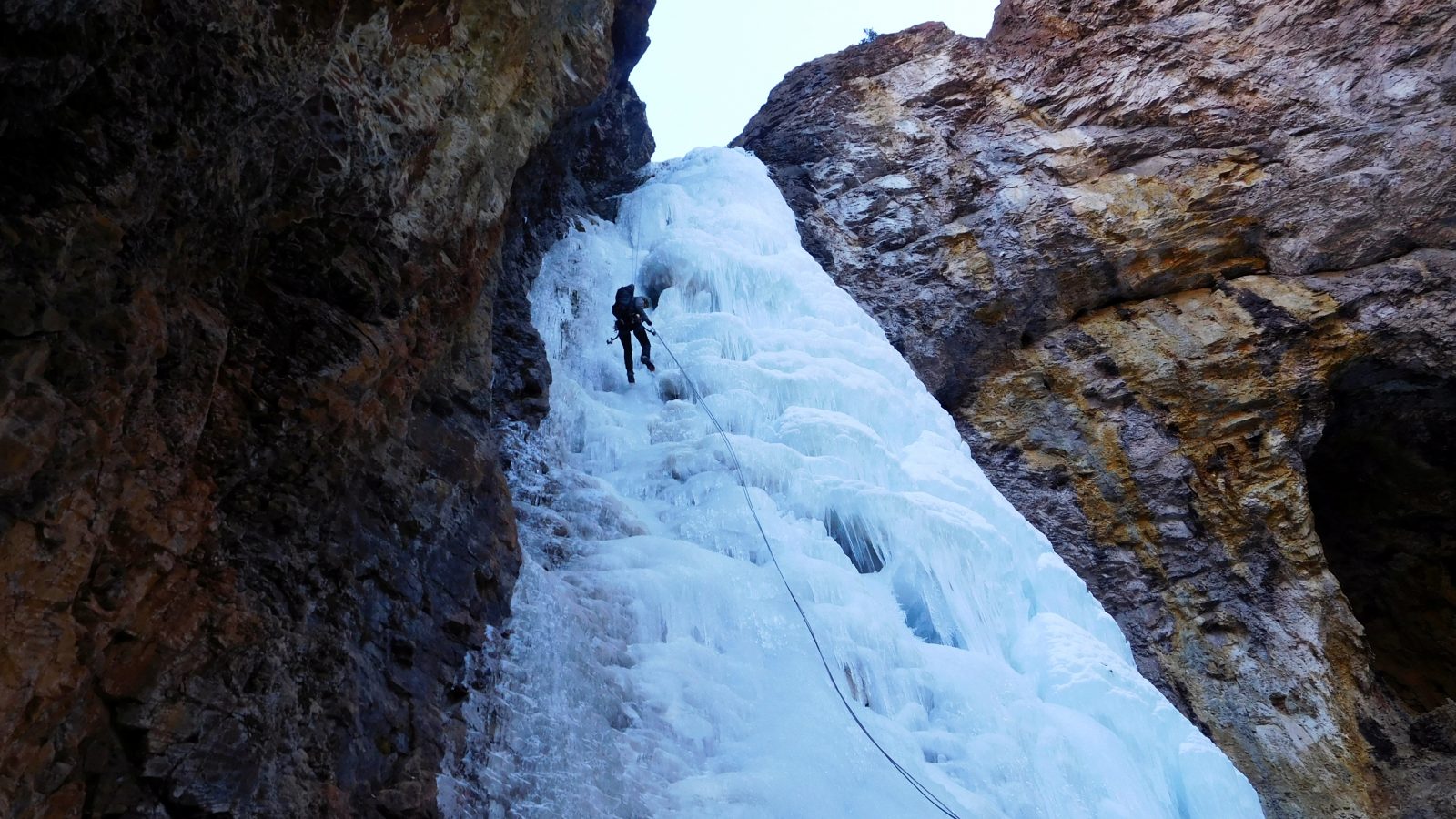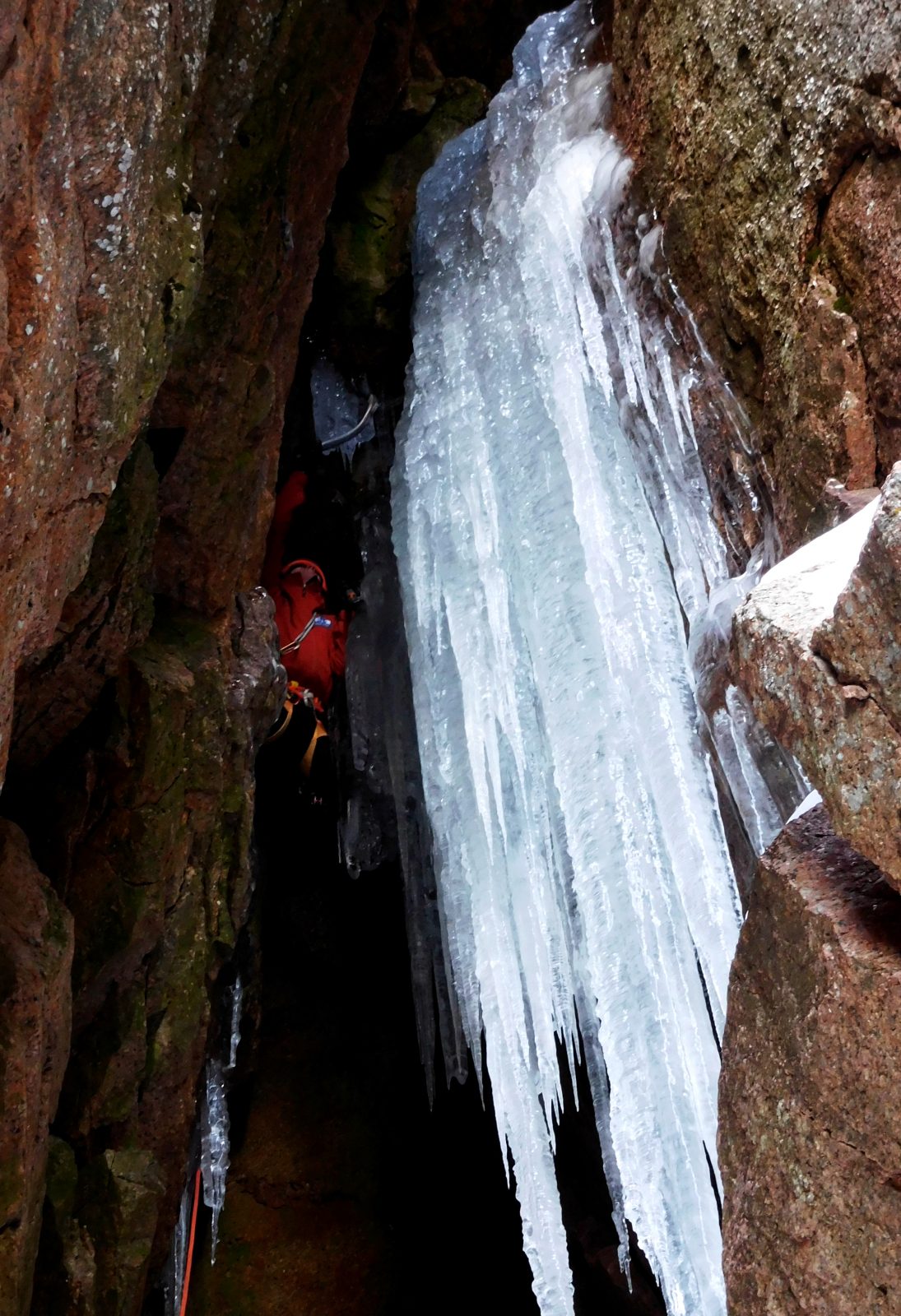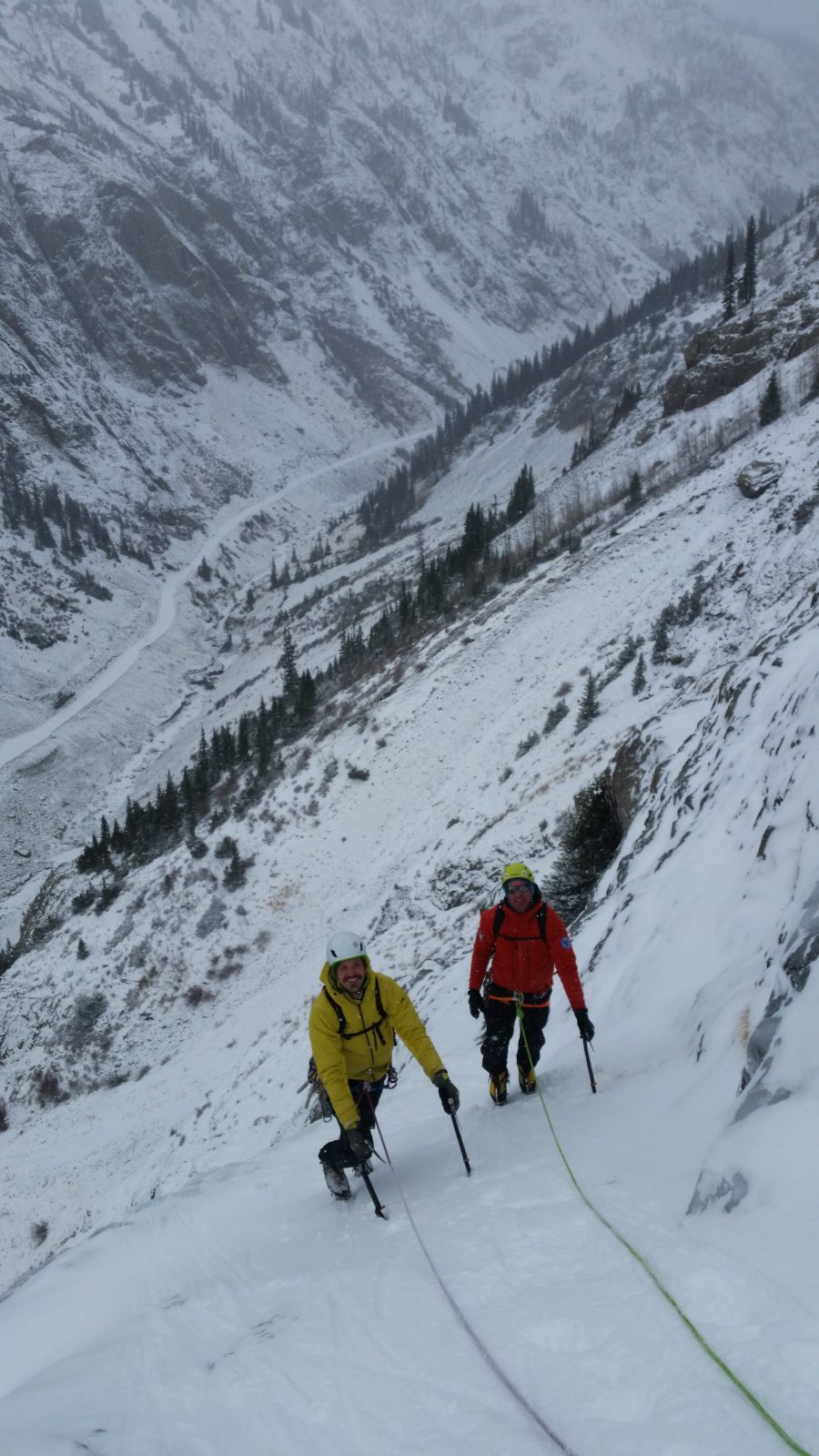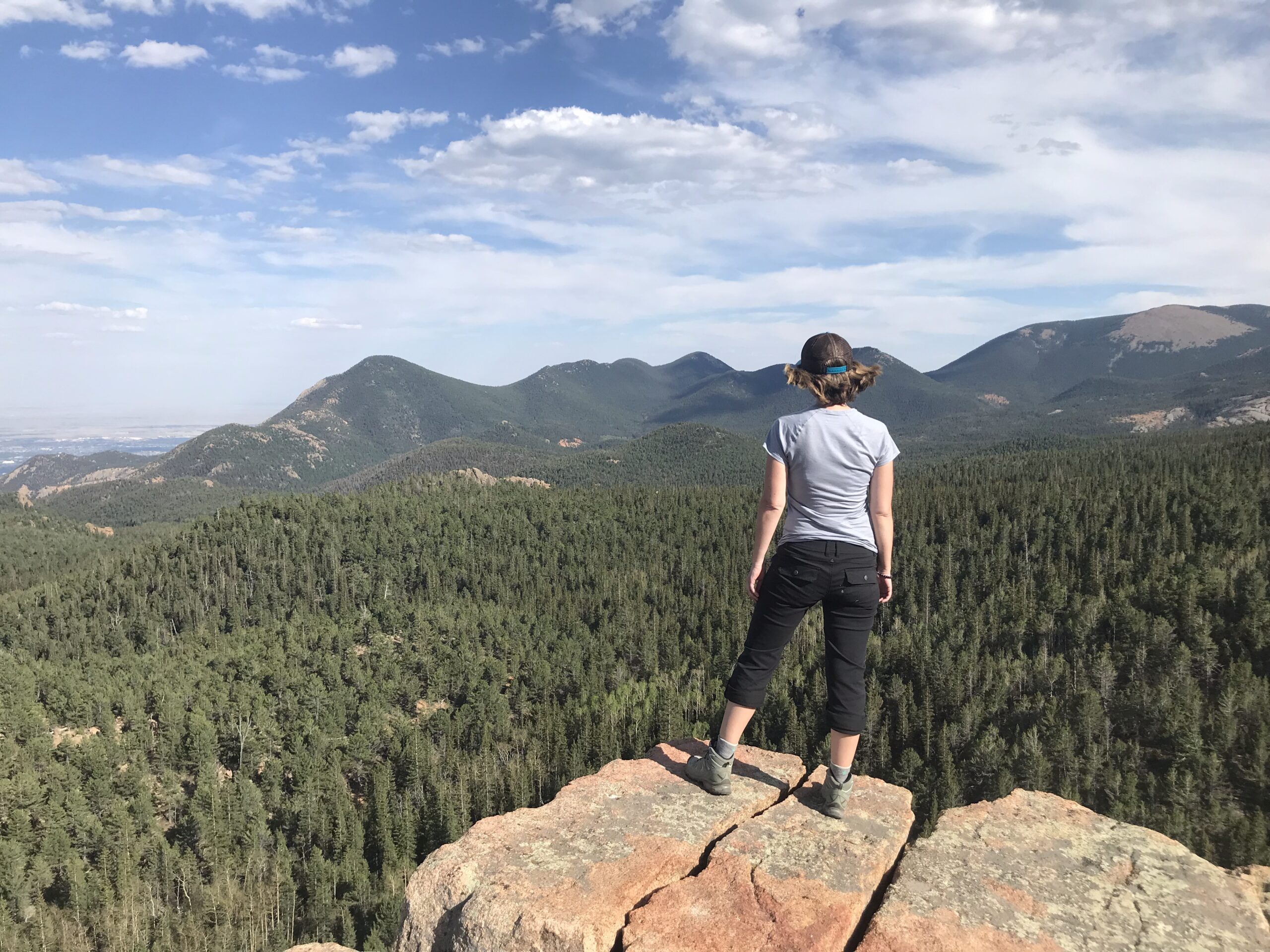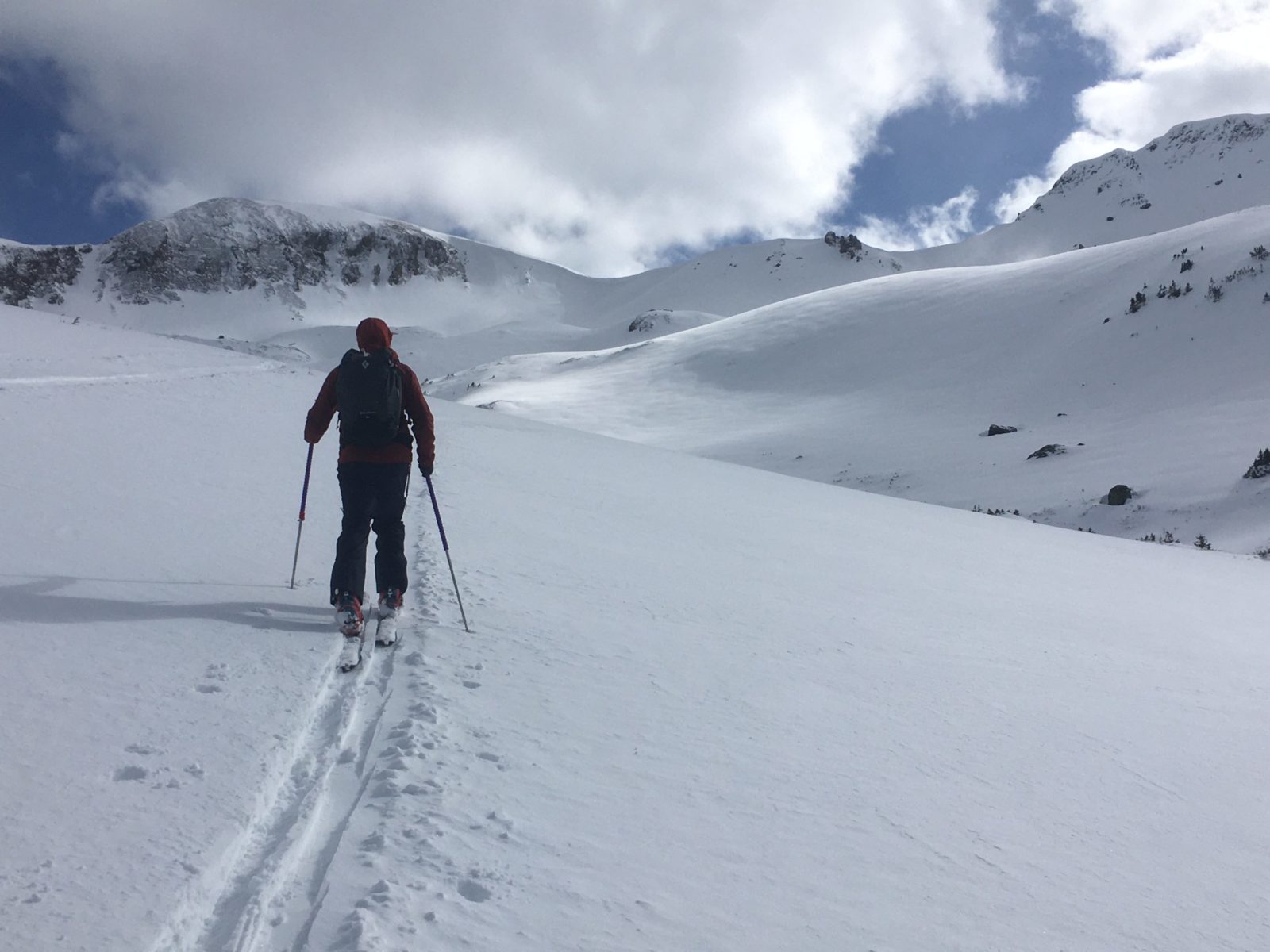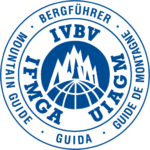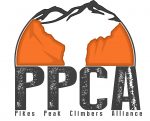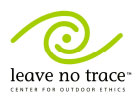Hiking to the summit of Pikes Peak is a truly unique adventure you will never…
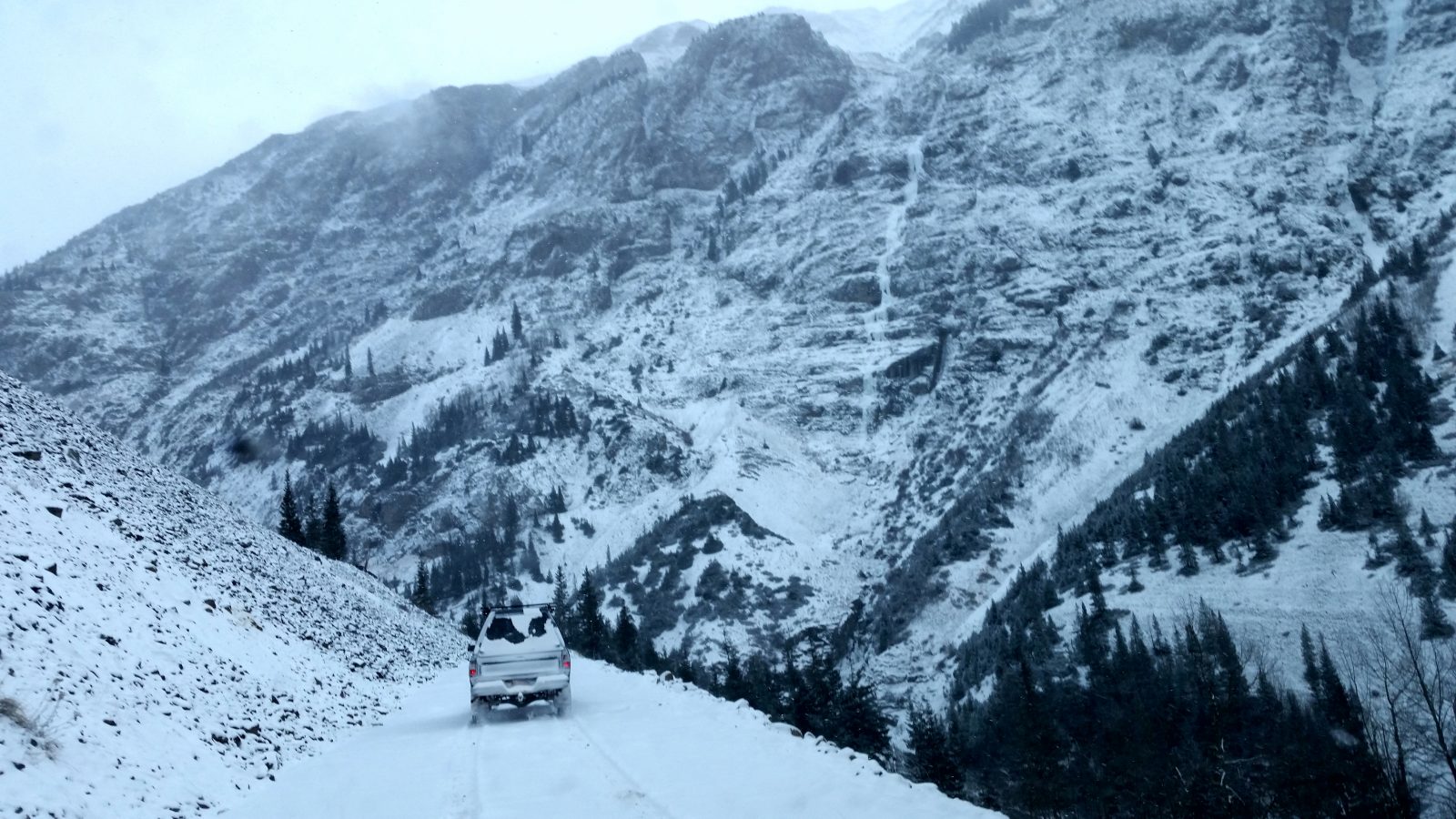
Ice
I stepped out of the car and into the Martian landscape of Pikes Peak at 13,000’. My eyes took in the shrieking cobalt-blue skies and pink granite boulders beyond number. Far below us, the whole cities of Woodland Park and Colorado Springs were visible. I drew in a deep breath as I watched the distant cars move like toys along the highway thousands of feet below. The lungs quickly filled but on the exhale it seemed like less air came out than went in. I felt a little light-headed. The drive up the Pikes Peak Highway abruptly main-lined us 5,300’ of elevation gain from the toll gate to where we had pulled over. This rapid increase always taxes the body, no matter how much time I’ve been spending at altitude. Pete let out a “WOOO!” from the other side of the car. I zipped my jacket up to my nose just as an icy gust strafed us both.
It was late Fall and even though it still felt like Summer in the city below, the Alpine environment had long since gone into it’s dormant Winter state. We Ice climbers had been scanning weather stations for weeks. Meticulously searching the temperature and precipitation at different elevations across the state, collecting data, looking for the magical ‘freeze-thaw’. The temperature crossing back and forth across 32 F, combined with timely moisture, is what breathes into life the ethereal crystal we seek.
We began by delicately wending our way across the massive snow covered boulders of the ‘Hero Traverse’; the path of least resistance on the frozen Northerly cliffs of Pikes Peak, used to access the ice & mixed climbs that book-end a feature called the Corinthian Column. We had come for the classic 4 pitch route called ‘Blind Assumption’ (WI5 M5). A deep chimney system so-named for the fact that most years you can’t see if there’s any ice on it until you’re a pitch (a rope length) up into the climb. True to its name, we had to dry-tool (using crampons and ice axes on stone) up the first two pitches, torquing the picks of our axes in thin cracks and balancing the front points of our crampons on tenuous edges before our efforts were rewarded. At the base of the third pitch was a hanging curtain of brilliant silver and blue ice.
The dazzling crux pitch of the route required us to dance up all three walls of the chimney, calling upon the full quiver of climbing skills – rock, ice, and dry tooling techniques. This broad culmination of skills put to use at high in the Mountains is called ‘alpine mixed climbing’ and is considered by some to be the most fulfilling climbing discipline. We made upward progress on the pitch by torquing one tool in a finger’s-width crack and using the other gloved hand to pull against a fractured blade of granite. We placed camming devices and chocked aluminum stoppers into the cracks of the stone to protect us in the event of a fall. The ice was too thin to take ice screws, and placing screws in hanging ice can be dangerous. If a lead climber falls on a screw in a hanging curtain, they run the risk of breaking off the icicle and pulling down literally tons of tumbling ice with them, which they would regrettably be attached to. After twenty feet or so we could stem our legs out to span the width of the chimney and delicately kick the front points of our crampons into the upper, fatter body of the hanging curtain. To kick or swing too hard would cause the chandeliered, early season ice to fracture and drop from the wall – possibly injuring both the climber and belayer, as well as destroying the climb for the season. But the ice was behaving well in its plastic condition and accepted steel without fracturing. At the top of the ice was a stone overhang with a tunnel-like aperture just wide enough for a body to squirm through, and squirm we did.
Once through the 4 technical pitches of Blind Assumption, we were treated to climbing a few hundred feet of couloirs filled with firm snow before we could exit via exposed ledges off of the North face, back onto the broad backside of the mountain where we found the road and our car.
***
I had come hunting for newly formed ice in preparation for an upcoming course. By meeting the prerequisite standards set forth by the American Mountain Guides Association, I was accepted into the Ice Instructor Course (or IIC) as a student to come and learn from some of the most well-traveled, experienced, and highly skilled climbing guides in the country.
The American Mountain Guides Association (or AMGA) is the internationally recognized group of mountain guides here in the USA. They set the Gold Standard in our industry for aspiring guides by providing world-class training and certifications in the three primary disciplines of Mountain Travel: Alpine climbing, Rock climbing, and Skiing. Ice climbing is one of the essential skills in the middle of the Alpine climbing tree. Aspiring guides interested in pursuing certification are first asked to meet prerequisites in their discipline of choice. To vet us for movement skills, for example, we’re asked to arrive having climbed (or skied) a prescribed number of both difficult and very long climbs (or descents) pertinent to the discipline selected.
Once at the IIC, I was put to the test for 5 long days of what felt like non-stop climbing. Students were grouped with an instructor at a 2:1 ratio. Each day a student would lead the other two ‘clients’ up and down an assigned route. At this particular course in the San Juan Mountains of Colorado, our routes often exceeded 1,000’! Every morning we would gather and discuss the important details of our day; things like weather, route conditions, logistics, anticipated hazards, and safety resources available (or unavailable) to us, among many other things. Throughout the day on our assignments we were given critical and timely feedback from the instructors who would correct errors, suggest alternate strategies, and generally help streamline our craft. Then at the end of the day we would conduct a debrief. We analyzed what went well, what we could improve on, and reviewed the hazards we experienced on route, as well as how we might mitigate them in the future. This continual process of dissecting our craft is the engine that drives progression.
***
Almost as good as climbing ice, is Guiding it. The medium presents unique challenges to the Guide. From keeping guests warm and moving, to identifying and avoiding avalanche terrain, exploiting features and positions to mitigate the hazard of falling ice, and learning new rope systems to efficiently get a party of three up and down a climb with safety; the work is incredibly engaging.
***
(Matthew Jerousek is a guide for Pikes Peak Alpine School. When he’s not climbing, he can be found scouring the cafes of the world in search of the perfect cup of coffee. You can keep up with Matt on Instagram @Jerousek)


